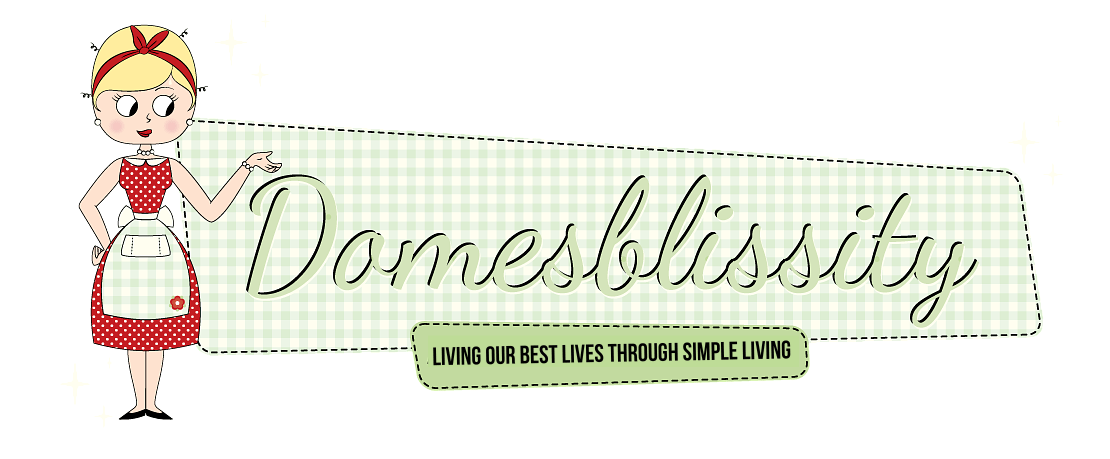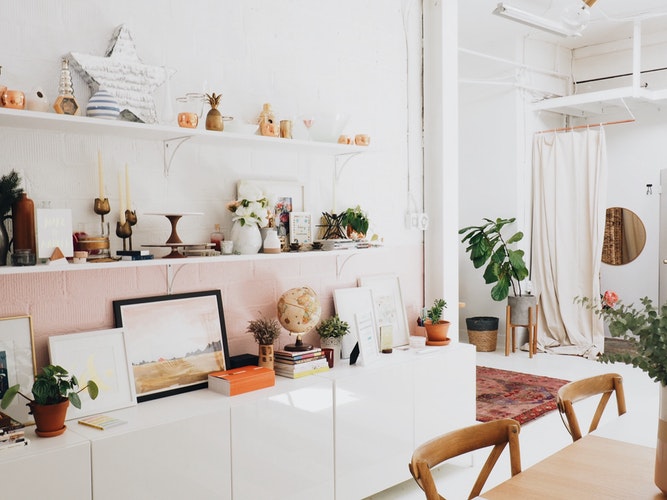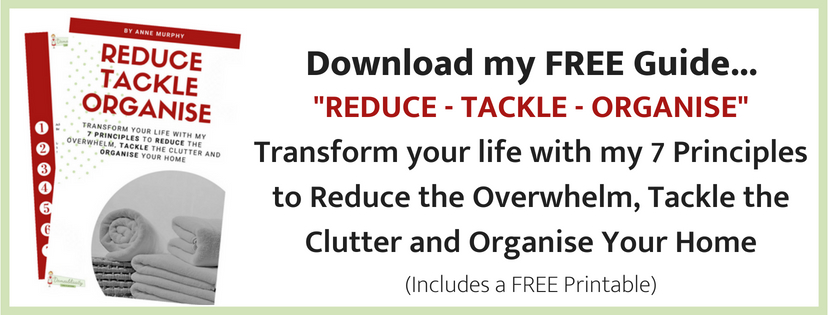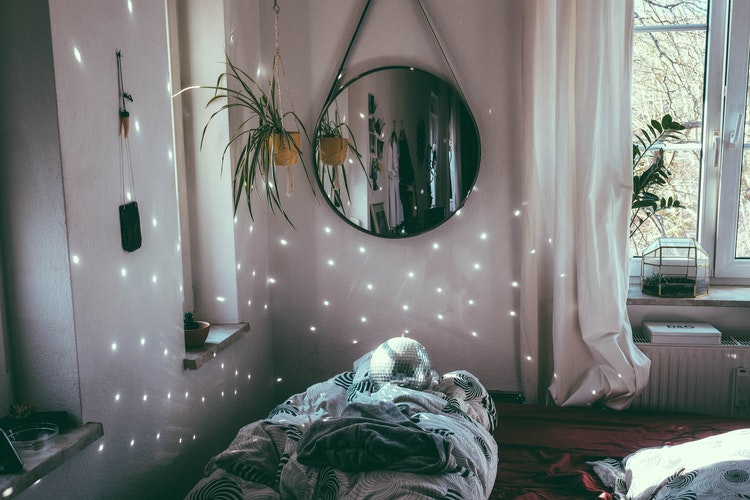Have you ever stopped and wondered why we buy home decor for our home? I’m talking about wall art, cushions, knick knacks, seasonal items for Christmas etc, candles, fancy bowls, matching bathroom accessories etc etc. Have you ever thought about how much you actually need these? I want to discuss why buying home decor could be costing you more than money.
How it used to be
I’ve never really given it much thought before but when I think back to the home I grew up in and my grandparent’s house, for example, there were never any homewares purchased. None. Ever.
In my grandparent’s home, anything decorative was usually a gift that was received at an 18th or 21st birthday, an engagement present, a wedding present, or other significant birthday. These were useful decorative items like vases for fresh flowers, additions to a matching dinner set like the gravy boat, platter etc.
My grandmother handmade everything including every item of clothing she ever wore (except maybe underwear). She crocheted and knitted cushions. She sewed old fabric into tablecloths and would embroider them. She crocheted doilies to adorn her dressing table or a spot on a small side table to feature a vase or a photo.
There were family photos everywhere like on the walls or a nook. Nothing matched. It was an eclectic mix but I always remember my grandparent’s home being warm and inviting, cosy, smelled like pineapples and there were always fresh flowers from their garden in a beautiful vase or handmade flowers from yarn or paper when fresh weren’t available.
The same as my home where I grew up. I don’t think my Mum bought any home decor when we were young. Maybe in her later years she might’ve bought a new clock or a mat but she never had cushions on the lounge, matching linen on her bed etc.
What I do remember about growing up though was our house was very clean and homely and Mum liked things spic and span.
It’s not WHAT but WHO
I love my home and I love who’s in it. My husband, children and pets. As I recently began my Spring cleaning, decluttering and organising for the year, I got to thinking about the actual stuff that is in my home.
I love a decorator cushion to change the look of a room. Neutral painted walls, curtains and bedding in all the rooms so you can easily change the look or colour of a room with cushions or artwork.
I’ve kept a lot of my mother’s and grandmother’s things, for sentimental reasons, but are they serving me a purpose? No. They are nice to look at to remember them but that’s about it. I’ve got to dust them, dust the surfaces they’re on and, when I pass, it will be up to my children to disperse of these things. Do I want that for the kids? No. Do I want our home to be the same loving, place of peace? Yes. Do I need these things in my home to achieve that? No.
I buy nearly all of my home decor secondhand, whether that’s thrifted, upcycled or from online garage sales. It might be something that just caught my eye that fits in with a theme I’m trying to achieve in my home but my home really doesn’t need that.
All it needs is somewhere to sleep, somewhere to eat, somewhere to cook and store food and somewhere to sit.
Other cultures
When you think of other cultures and how they live, they don’t even have that much.
Some cultures are nomads and they carry their homes with them. Some people live in caves because the temperature is cool. Or mud huts because they use local resources to build them. Some, like those in northern parts of the US and Canada live in igloos. When you start to think about it, they aren’t going to be adorning their homes with the latest cheap Asian imports because they’re trying to achieve a boho or coastal, Scandi look.
Have we become so focused on how our homes should look instead of how tidy and clean they should be?
Those cultures who live such a minimal lifestyle in their homes wouldn’t have the space nor the money to adorn their homes with such trival items. Why do we? They still have the same homely environment to live in and have less upkeep to maintain their homes.
It makes us feel better
Does it? Does it really make you feel better if you’ve copied a style from a magazine or trend?
Does all that dusting, arranging and continual tidying make you feel better? What about when the kids or your partner come home from work or school and dump their school bags, school notes, on the perfectly styled vignette on the dining or coffee table? Do you quickly move it to where it should go save messing up the vignette?
How are you really living your life? Are you living it like out of the page of a magazine or how you really want to live?
Kids come in and out all day with a matter of all sorts of things. My son has a rock and stick collection to give anyone avid rock or stick collector a run for their money. My teenager daughter is, well, a teenager and the last thing on her mind is organising and putting things back to where they belong. If I let it upset me every time I went looking for something in her room, I’d be a nervous wreck.
Having a room styled a particular way does make me feel better but I think it’s only because I’ve achieved that look in the magazine for a lot cheaper or have upcycled pieces for the look.
In reality, all I’ve done is make a lot of work for myself in having more furniture and knick knacks to dust, cushions that will probably only fall on the floor and the covers will need washing on a regular basis.
It costs a lot of money
Just think if you saved that money you spent on homewares, what could you buy instead? Those cheap Asian imports might only be $10 or $20 a pop but if you’re buying 2 or 3 every week or every time a new catalogue comes out, that adds up to $20 to $60 a week. This over the course of a year could be a week’s holiday, a new TV, the start of an investment fund etc.
Even if you buy these things secondhand, which I always do and you will always find the latest homewares ending up on online garage sales or in the thrift shops, you still have to maintain them, that is clean them, dust them etc and put up with the space never looking perfect like it does in the magazine. That’s just an unexpected reality, especially if you have children. (Might be a different story if your children have grown and left home.)
It costs a lot of time
Just think of all that extra stuff you have to deal with. Cushions and knick knacks etc that have to be cleaned and made room for. Is your home just a storage space for these things instead of being a living space?
Could you imagine your home without them? What if you just had a lounge and a coffee table that kept a couple of books or board games. Does it need all the decorative cushions or items on the coffee table to make it a nice space for your family? No. The lounge suite is still serving a purpose as is the coffee table. All the stuff on it? Maybe not. It’s not going to make a difference to how your family interact. It’s only going to give you more to look after.
Imagine if you could blitz through the housework without having to dust a single knick knack again in your life? What if you only had the bare minimum of furniture in your home? Would that free up more ‘me time‘ in your life to do things you’d rather be doing? I bet it would.
What are all those things you’ve wanted to try or get back into doing? Reading, craft, crochet, knitting, macrame, starting your own business, whatever.
The cost to the environment
Where does all this stuff end up if no one wants it? New styles are coming out every year. One for each season. People change their minds on the kind of style they want in a room more often than the weather changes. If it’s not donated, it usually ends up at the tip and as land fill.
Just like I mentioned above about my grandparent’s and parent’s homes, they made do with what they had. It was the one style their entire lives. If something broke, they fixed it.
Admittedly, magazines back in those days were useful to read. They were full of home hints, recipes and sewing, knitting or crochet patterns. Not like the magazines of today which are full of ads, for, you guessed it, new home decor and articles on how to achieve different looks in your home, among other useless information.
According to a www.news.com.au article, the weight which is the equivalent of 3.4 million KMart, cheaply made coffee tables is taken to landfill every year and that is in the Greater Sydney area alone and that doesn’t include those items which are illegally dumped.
It costs you nothing if you find JOMO
I’ve spoken about JOMO before. The joy of missing out. If you were never influenced again by a magazine, an interior decorating show or Instagram influencer, just imagine how much free space you’d have in your mind to focus on other things. Things like keeping your home tidy, enjoying family time, finding me time for yourself, pursuing your goals and your personal interests.
You’ll no longer be influenced into thinking you need a particular style of decor for your home. You won’t be spending unnecessary money on knick knacks and trinkets to decorate your home. You’ll have what you need and you’ll still have a cozy, warm and inviting home for your family.
What will you keep and what will you get rid of? Are you ready to part with unnecessary clutter in your home just because it was in a picture you saw in a magazine or on social media? How much will you and your family benefit from it?







